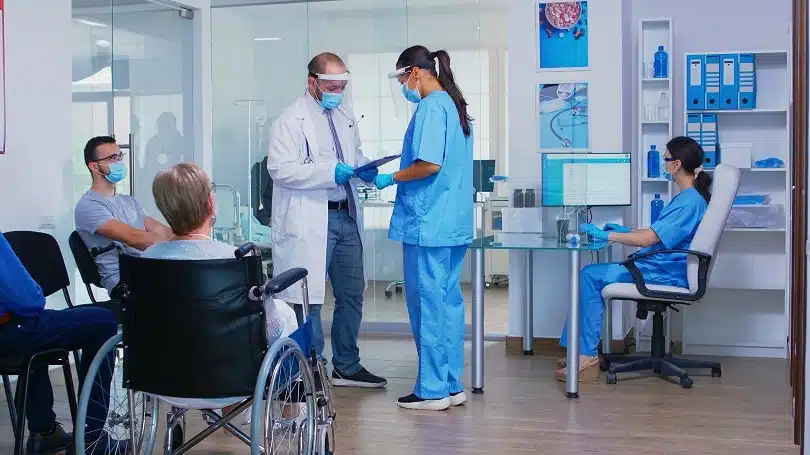Dr. Karan Thakur argues that given the advances in hospital design and architecture, it is possible to create modular health infrastructure – a hospital in hospital model – that can be efficiently ‘turned on’ in times of outbreaks.
By Dr. Karan Thakur
The Covid-19 pandemic has led to the emergence of multiple global strategies on prevention, containment, and management of the disease outbreak. Tactical and strategic systemic approaches that nations have evolved include the primacy of testing to some advocating strict lockdowns to others focussing on contact tracing and a majority adopting a hybrid model of all of these approaches.
The World Health Organization has been espousing identification, isolation, testing, tracking, and treatment as its stratagem for effective handling of national and cross-border outbreaks since the beginning of the crisis. While most nations adopt this approach, a critical unsettled debate revolves around the hospital allocation and infrastructure division for Covid versus non-covid patients.
Given the inundation of cases and the precipitous spread across borders, most national health systems were coming to grips with the pandemic by utilising all available resources to control the outbreak. Hospitals were asked to prepare and equip Covid-19 wards, train staff and buffer up on inventories. Like with any disaster management protocol, it was important to use all levers to manage the crisis given the geographic spread of the disease. However, a critical differentiator between other disasters and this infectious disease variant was the risk posed to staff and ‘normal’ patients.
The influx in most disaster management cases does not pose a direct and significant threat to the well-being of others in the physical proximity of the relief site. Infectious diseases turn that logic on its head. Not only does the disease hold catastrophic potential for a section of those infected, but it also poses consequential risks for others. This has been tragically witnessed in the current outbreak with a large number of health workers have acquired the virus in the line of their work. The use of personal protective equipment, preventive procedures, and physical segregation is foremost in our defence against infectious diseases; but they do have their limitations. Additionally, the exposure to positive cases of the outbreak necessitated the protective quarantine of a large number of health workers, just as they were required to be rendering care in the face of rising numbers.
Second, the risk posed to those seeking care for other ailments poses moral and ethical questions. Already at a higher degree of risk because of their underlying condition, the potential exposure in hospitals treating both covid and non-covid patients can be catastrophic. This risk is further complicated with the fact that lockdowns and the unavailability of hospital beds for non-covid patients becomes a compromised reality in a pandemic. The need to protect these patients and ensure that an adequate number of precious health workers are available, makes the case for dedicated covid/infectious disease hospitals stronger.
One approach to circumvent the problem above has been to take any patient at the hospital as a potential covid positive case. This has an enormous cost attached towards it in both clinical and monetary terms. Given that global supply lines, even of invaluable medical supplies and equipment, remain stressed, the judicious use of preventive supplies cannot be adequately underlined.
These multitudinous complexities that health systems are only just coming to terms with, need to find solutions for this and future pandemics. The need for dedicated infectious disease blocks within hospitals and dedicated hospitals themselves is a possible way forward. Given the advances in hospital design and architecture, it is possible to create modular health infrastructure – a hospital in hospital model – that can be efficiently ‘turned on’ in times of outbreaks. This will help safeguard health resources – manpower, material and, beds – and enable on better allocation basis the burden of the outbreak and peacetime health needs of the local population. Second, the need to create dedicated hospitals that are used to treat infectious diseases needs to be part of the health systems policy. These institutions would need specialised manpower, equipment and, hard infrastructure to adequately manage future outbreaks. The risk pooling of infectious disease loads will help in ensuring that during outbreaks the entire health system machinery is not thrown into existential peril. In peace times, these institutions could double up as research institutes and also carry out outpatients or ambulatory care, which can be relocated in times of acute need.
This approach, though capital intensive, is a dawning reality that systems across the world need to assess, engender and adopt in order to do equitable justice to those who acquire an infectious disease and those who do not, but remain vulnerable due to their state of health.

















